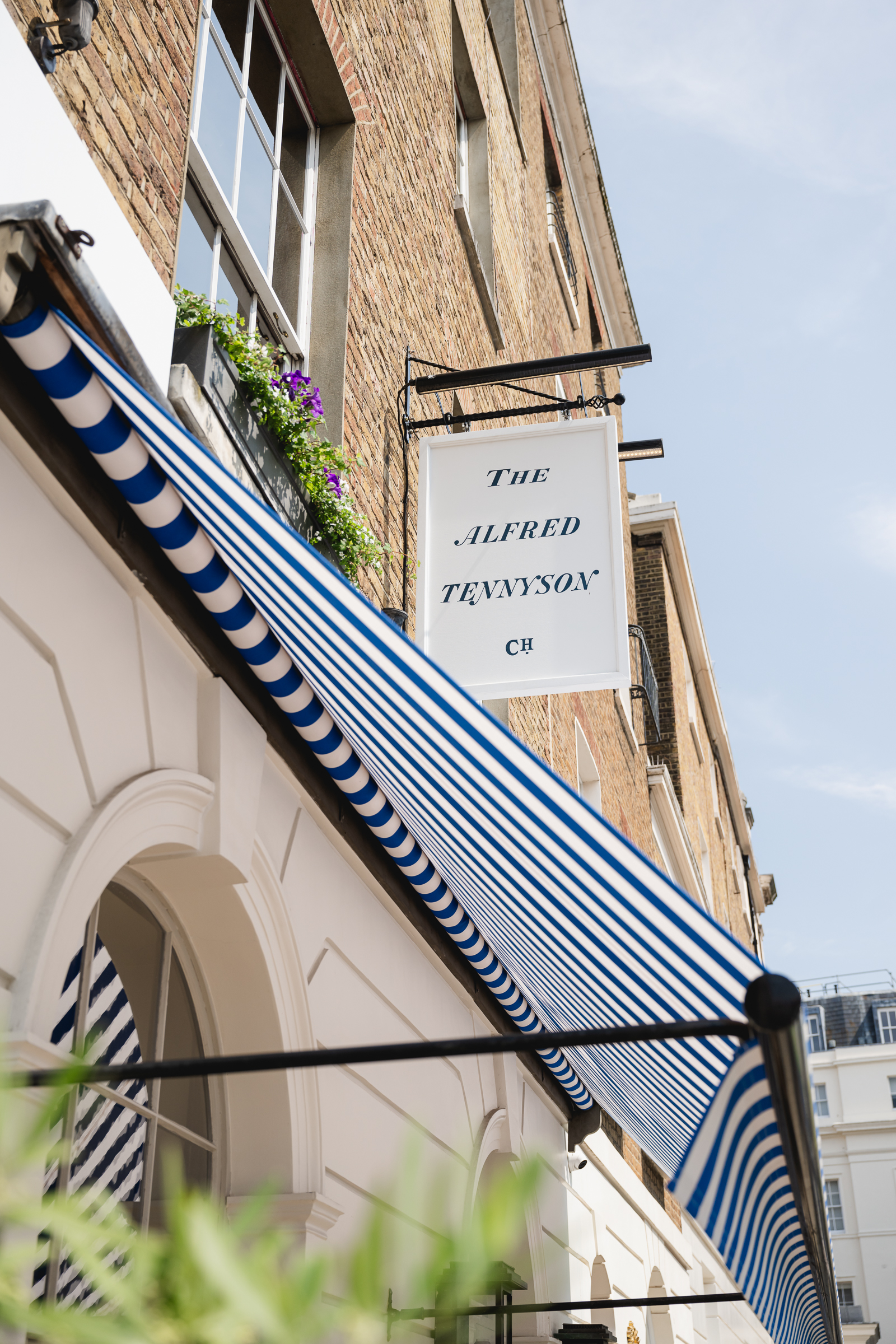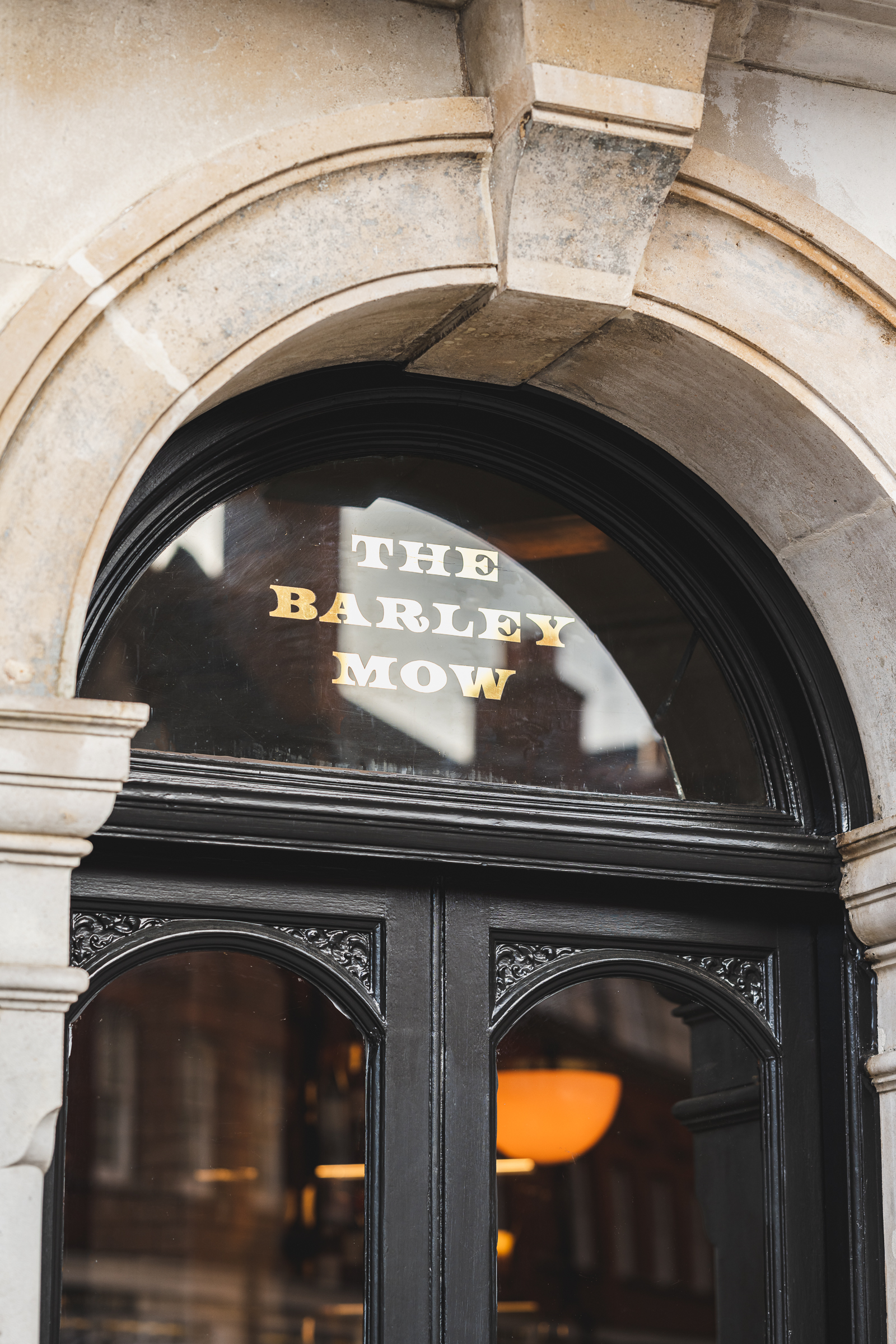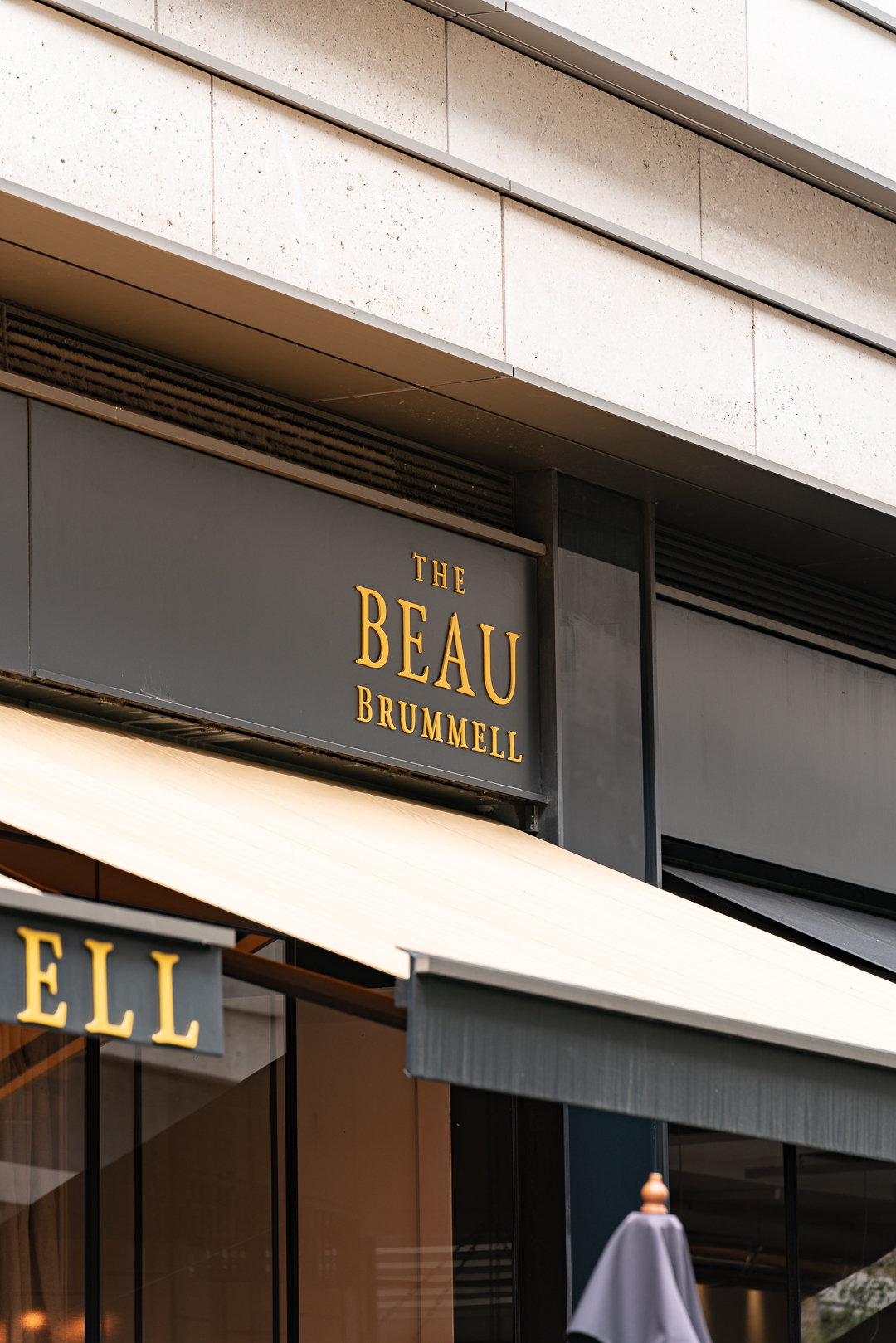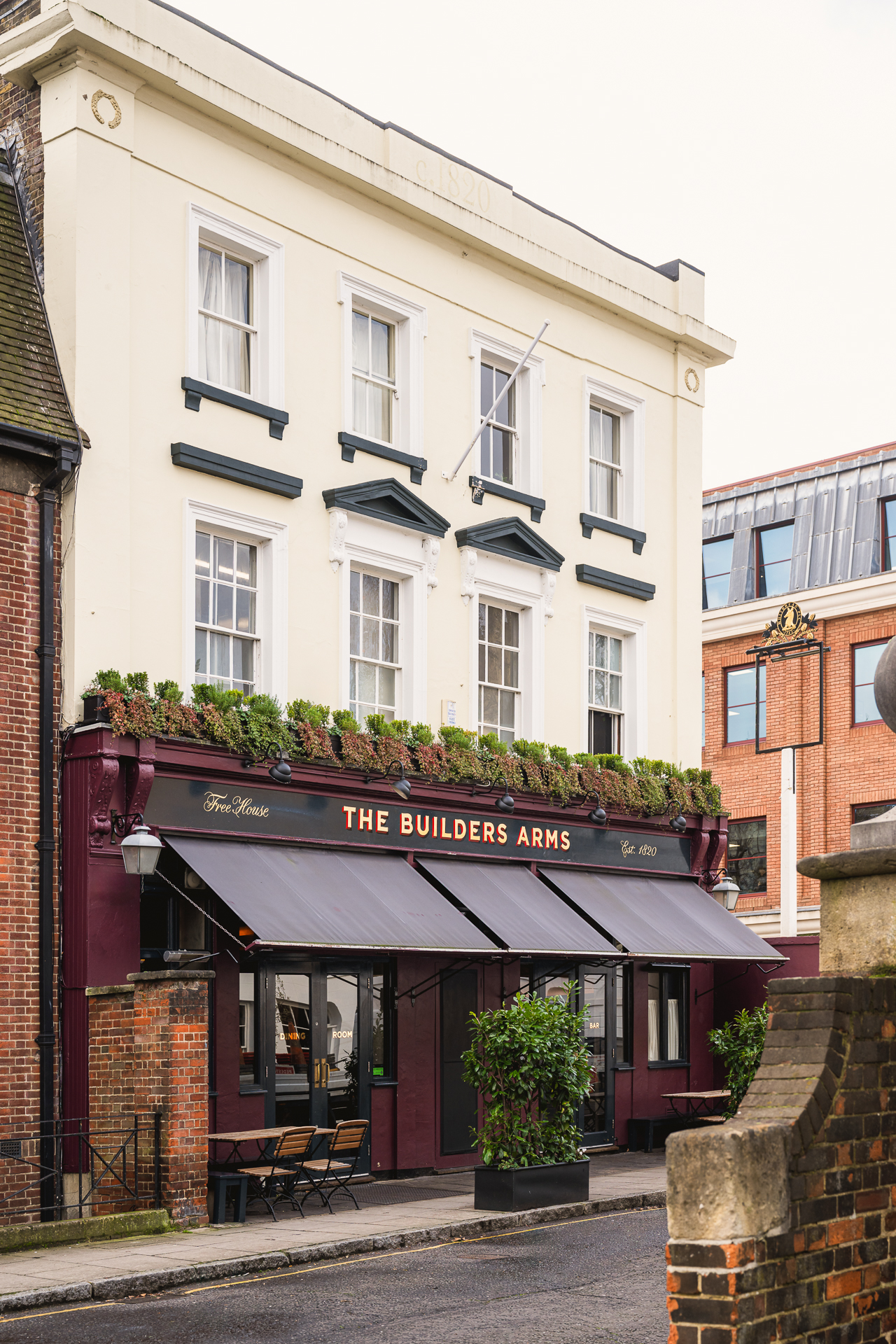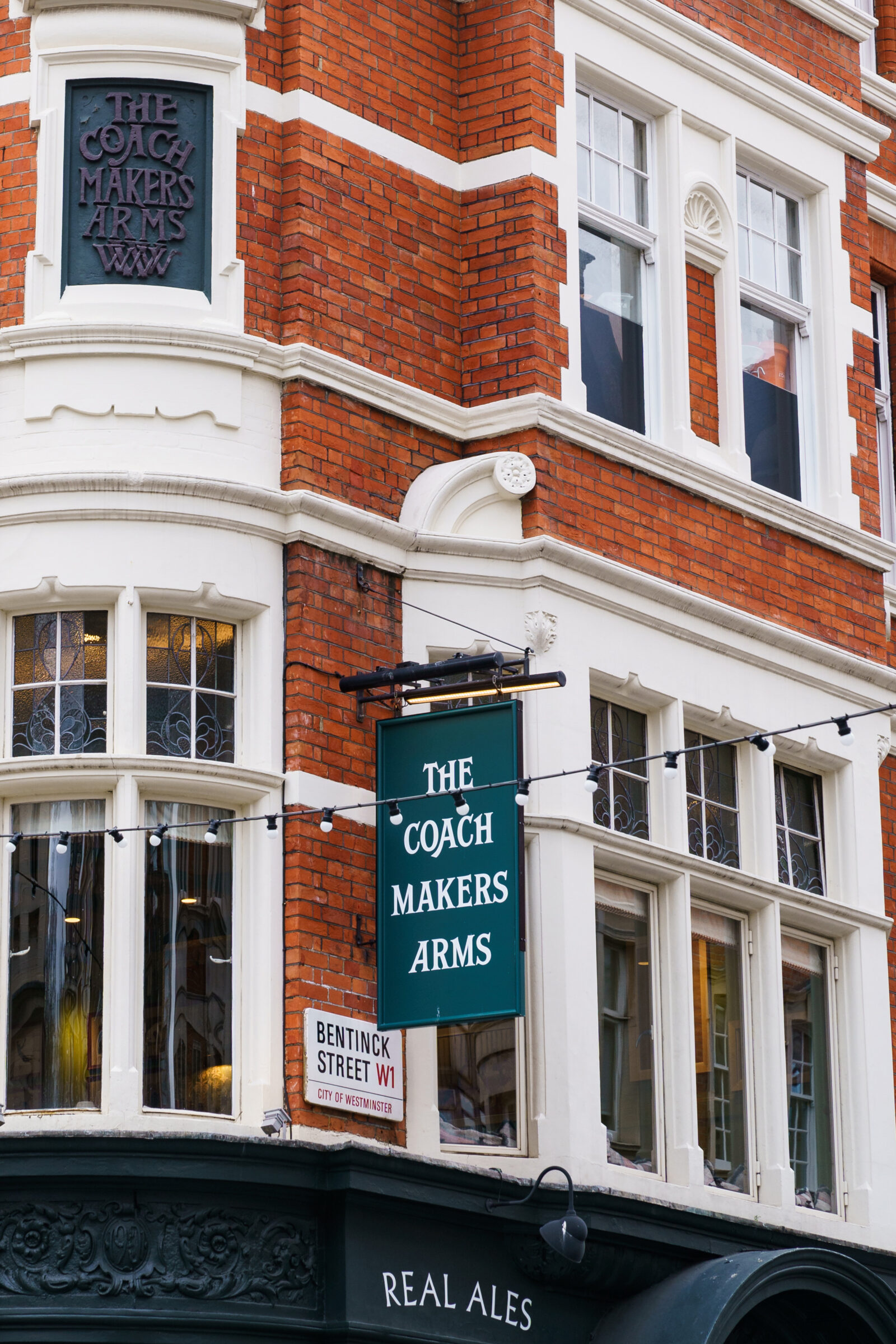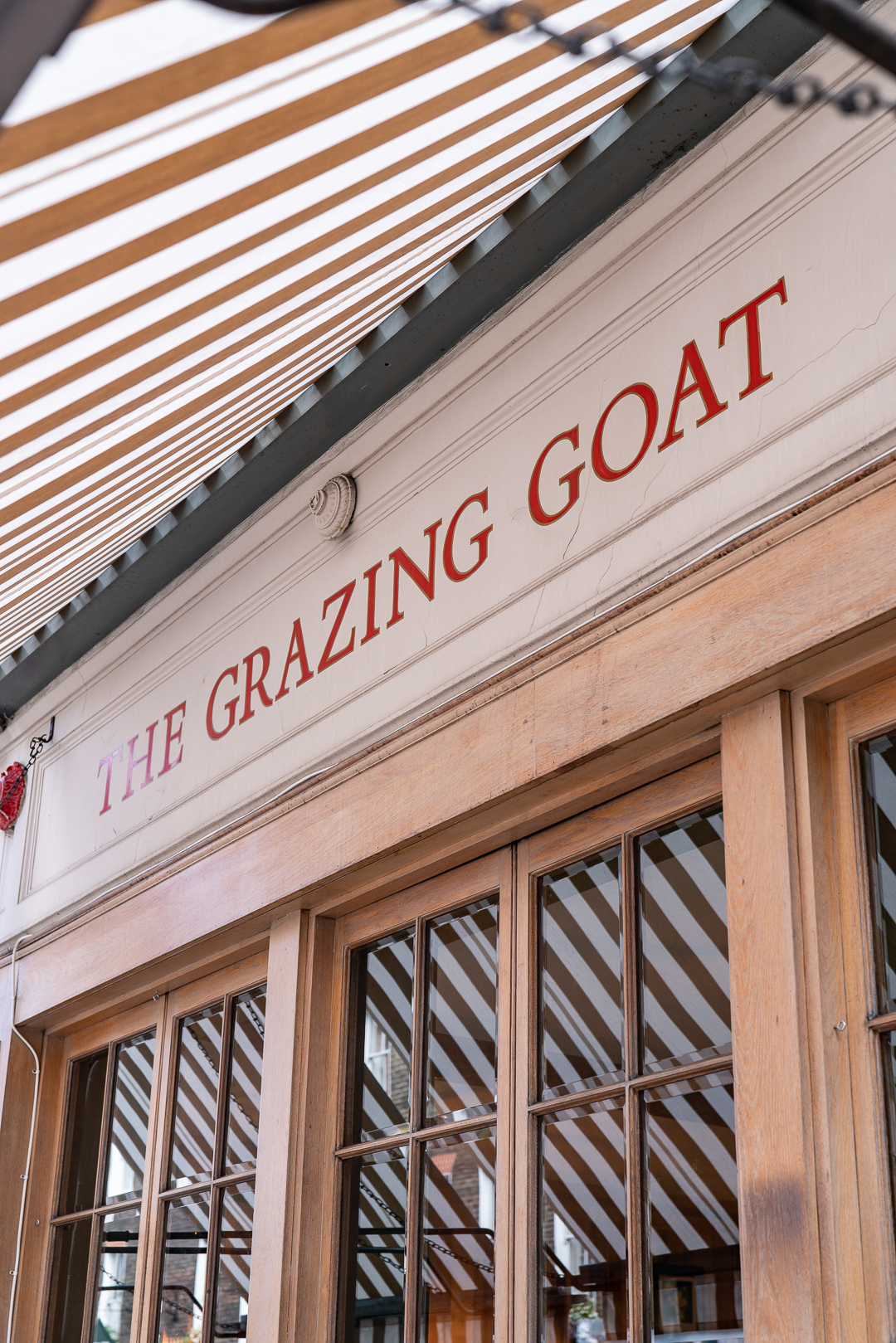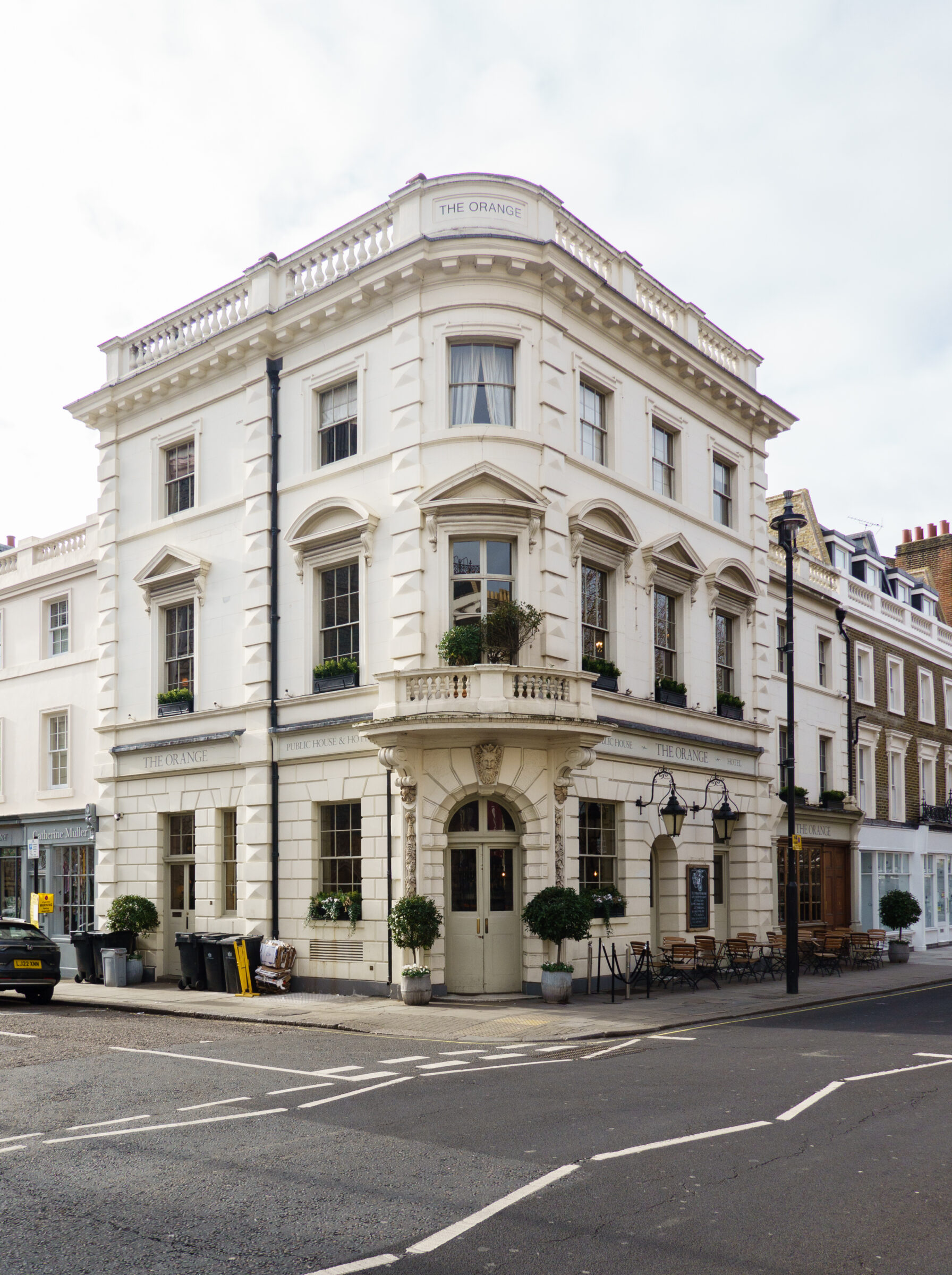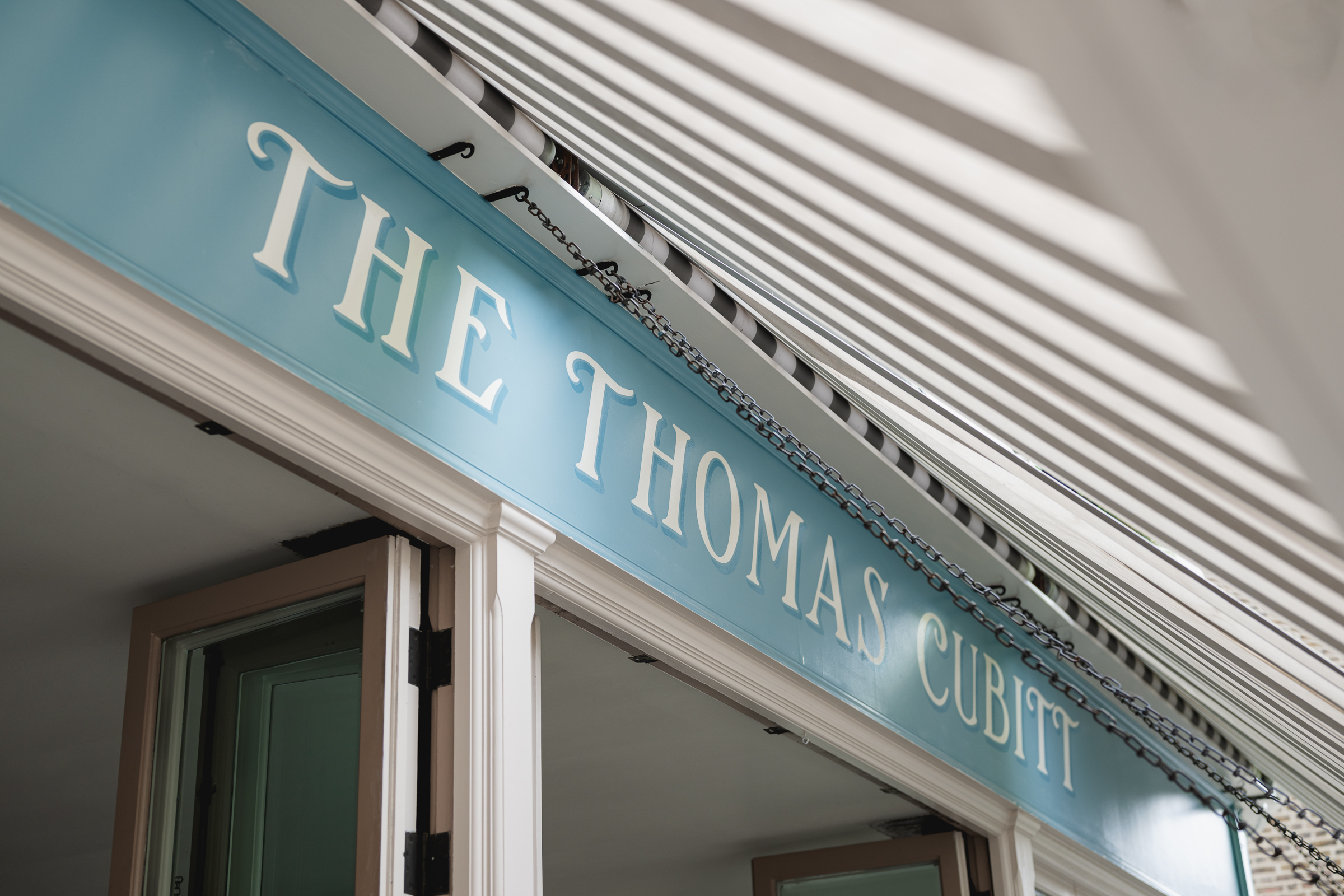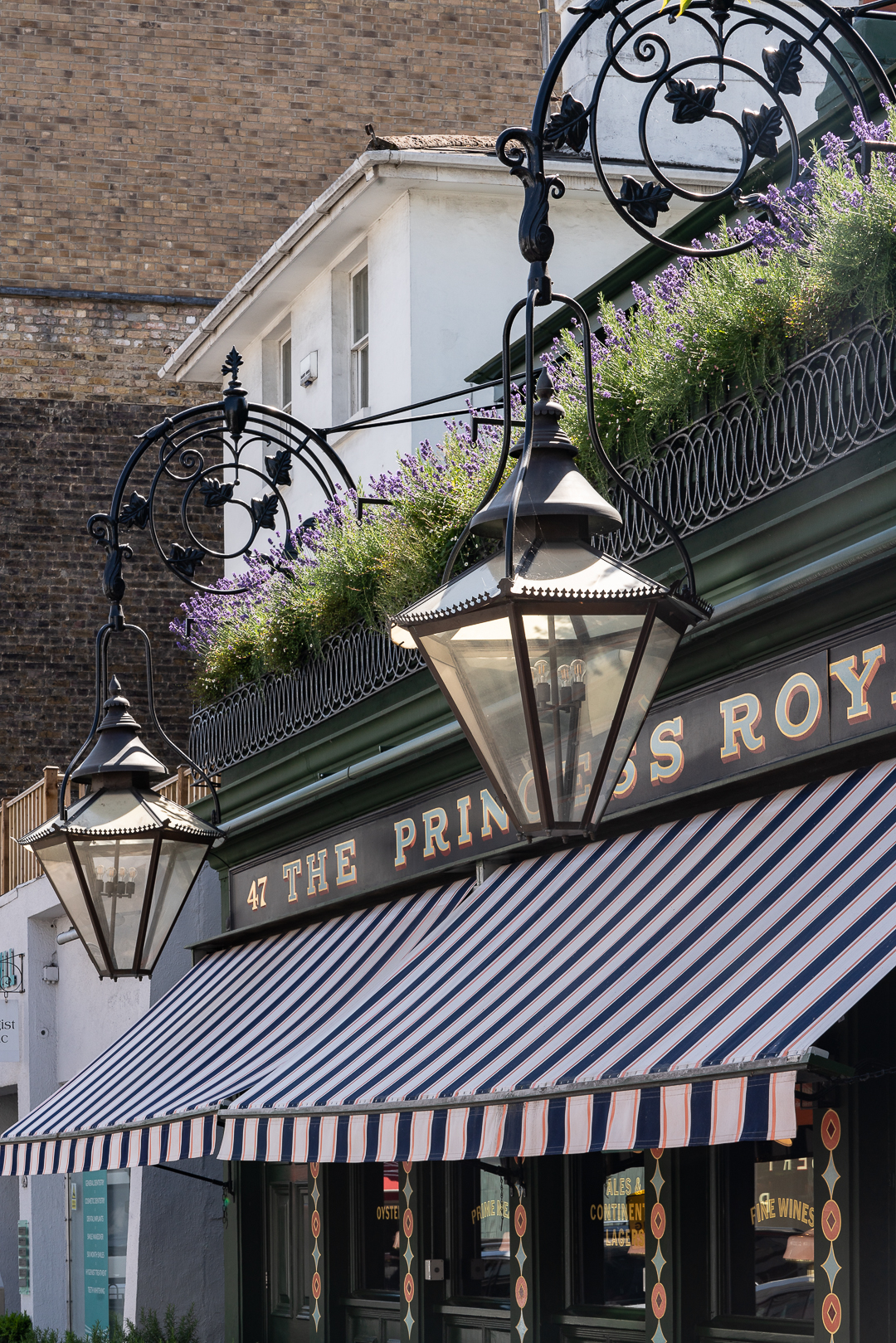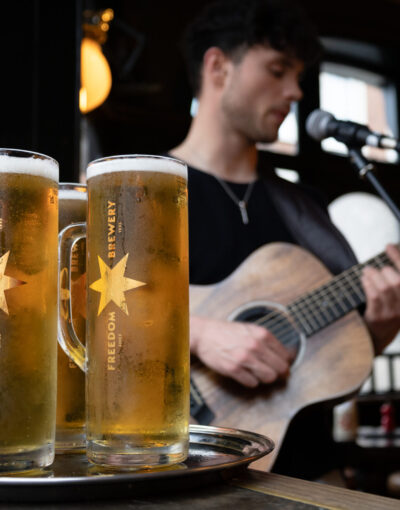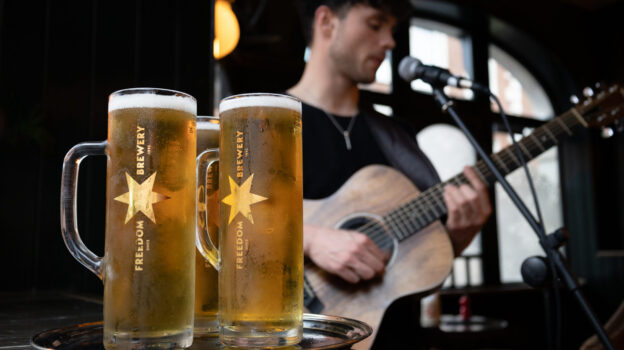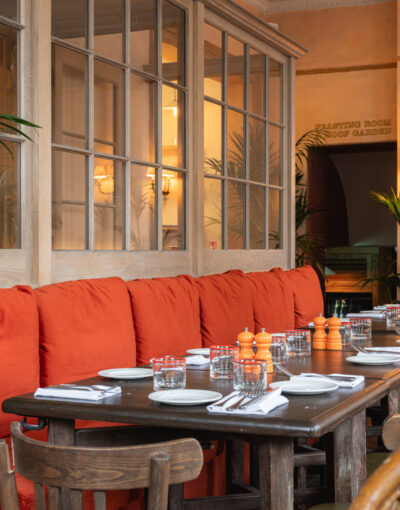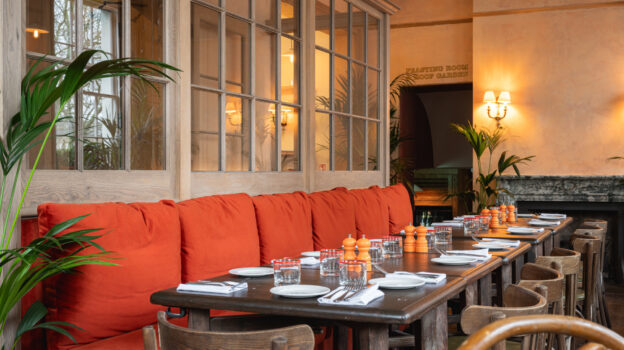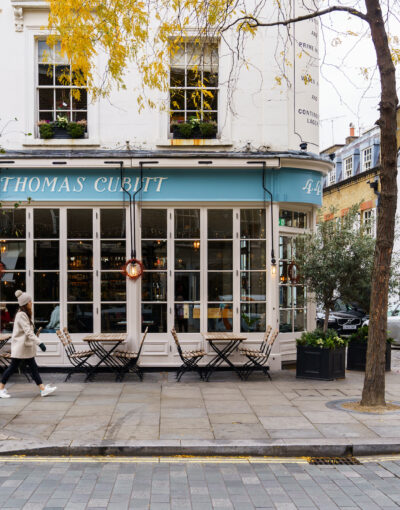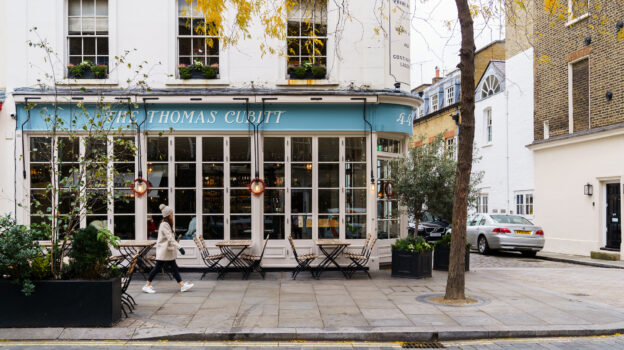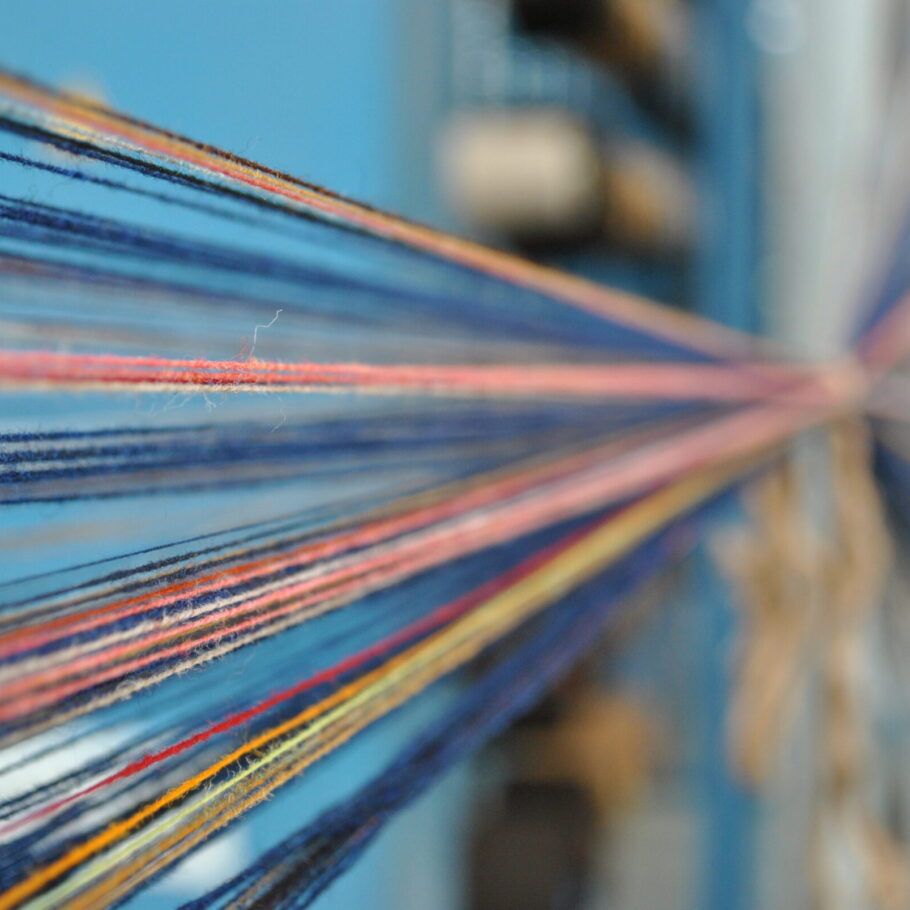
Abraham Moon was founded in 1837 in Yorkshire where the company is based to this day. With a serious heritage in the woollen mill industry supplying fabrics for clothing and furnishings this is a company steeped in tradition and British craft with a reputation to prove it. They have supplied much of the fabric at the newly refurbished Princess Royal in Notting Hill and we love what they do.
We caught up with Joe McCann, Head of Brand and Marketing to tell us a bit more about the company.
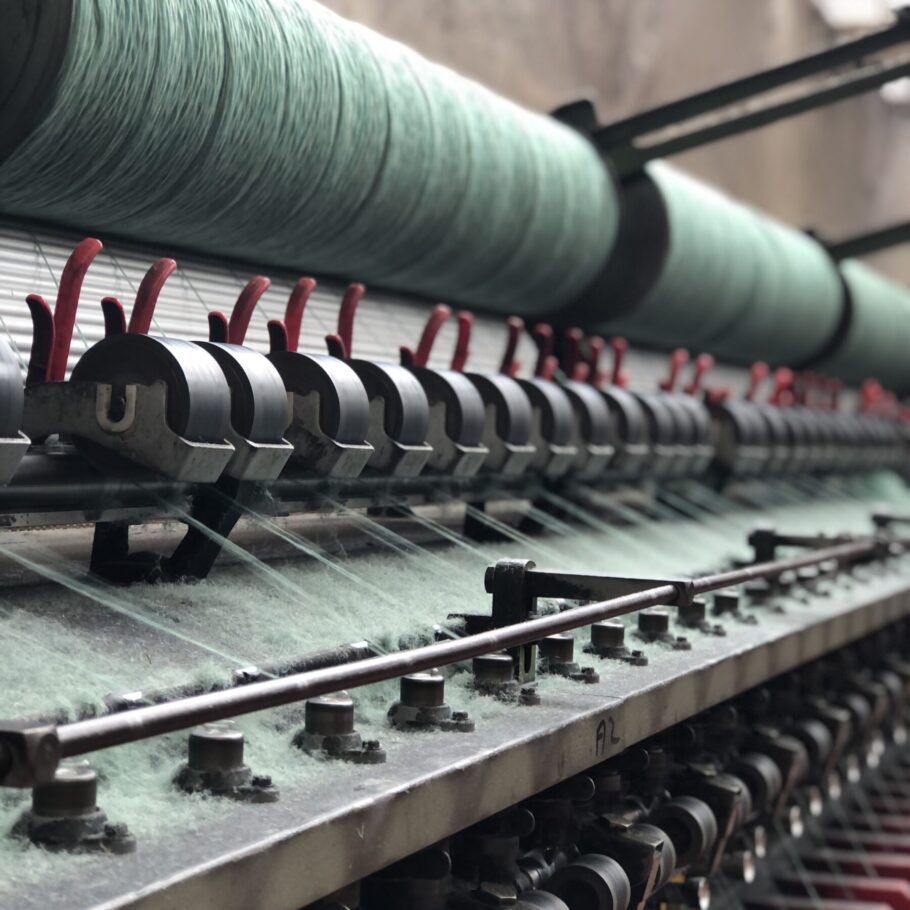
Can you tell us a bit about the history of MOON?
Abraham Moon and Sons was founded in 1837. Abraham had considerable standing in the community of Guiseley, on the Northern fringes of Leeds and the Southern fringes of the Yorkshire Dales, and supplied many local families with yarn to weave cloth on hand looms in their homes. When the cloth was woven he would collect the pieces, paying the weavers for their work. The cloth was then scoured (washed) locally and hung out to dry in the surrounding fields. Abraham would then transport the pieces by horse and cart to Leeds for sale in the market.
In 1868 Abraham had a three storey mill built in Guiseley. The mill had an abundant source of local water which was soft and ideal for scouring (washing) and other processes necessary in woollen manufacture. Today we still use the pure water springs underneath the mill for scouring; as manufacturing technology progresses with time it’s these simple historic details that make our fabrics special.
The newly built railway to Leeds ran directly behind the mill which had its own sidings. This proved an invaluable form of transport both inward (wool for processing, coal for power) and outward (distribution of cloth to the expanding consumer network). The company’s records show exports to both Western Europe and Japan as early as the 1890’s.
In 1902 the original multi-storey mill burned to the ground. Undeterred Isaac, Abraham’s son built a much larger single storey mill. By this time the mill had become fully vertical, meaning all manufacturing processes took place on one site – from raw wool through dyeing, blending, carding, spinning, warping weaving, and finally finishing the fabrics. We are one of the very few remaining vertical woollen mills left in Great Britain today. Isaac Moon took the business forward until his death in 1909.
In 1920 the Moon family sold their shares in the company to Charles H Walsh. The Walsh family still own the business today.
Throughout the 1990’s, wool faced increased competition from man-made fabric. While many mills tried (and failed) to compete on price, MOON focused on quality and concentrated on the luxury market, taking advantage of the manufacturing control and consistency that only a vertical mill can offer. Our customer list includes major international brands such as Burberry, Paul Smith, and Ralph Lauren.
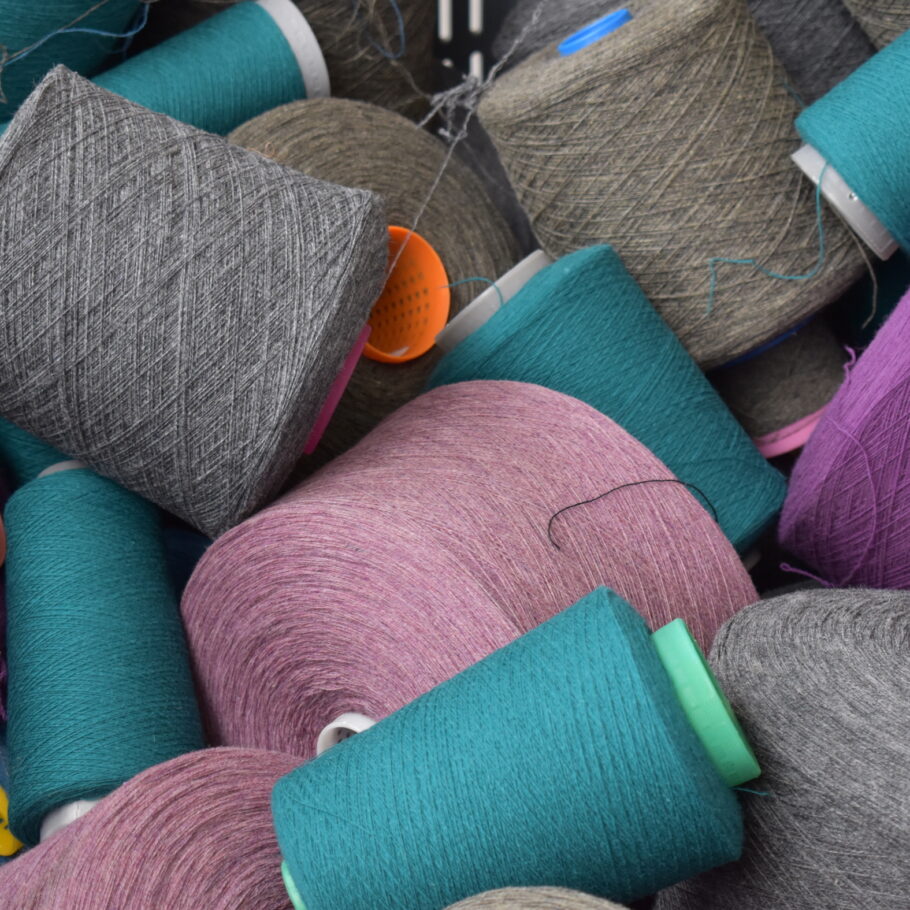
Cubitt House is always keen to support British Industry and design with such a fabulous heritage such as yours. What does this strong heritage mean to you?
Heritage is incredibly important to all the team at MOON. A lot of passion and pride goes into all the products we manufacture, reinforced by the fact that knowledge and expertise honed at MOON is still actively passed through the company in multiple generations of family. However, I also feel it is vital not to become complacent and allow your heritage to dominate your brand. Our business was born from ingenuity and innovation. The same values flow through the company today, enabling our transition from a woollen mill into an international brand.
Can you guide us through the whole process from design to finished fabric?
This video pretty much shows the process from start to finish. This process can be divided into 8 main stages.
Raw wool
Raw wool is delivered to our site in Guiseley. Our Merino Lambswool is predominantly from South Africa and our Shetland quality Pure New Wool is from New Zealand.
Quality starts on the farm; sheep reared on a different diet can affect the quality so we buy our Wool from proven sources. To make our luxury fabrics we need the best natural raw material. The wool that arrives at our site is either scoured or cleaned and combed broken tops, which ensures that there is less than 0.3% impurities within the fleeces. The wool that arrives at our site is scoured (washed), to ensure there are almost no impurities within the fleeces.
Dye House
The raw wool then goes to the Dye House, to be dyed using precise combinations of dye, pressure, temperature and time. These combinations are kept a close secret to ensure our unique colour palette remains ours alone. We can currently dye our wool in over 500 different shades and colours; within the Dye House we keep a library of shade standards and recipes to ensure we have the continuity in each colour year after year. This is a highly skilled process that is essential to creating beautiful yarns.
Blending
The secret to creating beautifully rich colour is in the blend. Up to 7 different coloured wools can go into the recipe for each yarn to create the finished colour. This is what gives Tweeds, Heathers and Plaids there uniquely rich texture. Having yarns made up of many different component shades gives us a great advantage when it comes to the final look of our fabrics. For example, if a check design includes 5 different colours, and each colour has 7 different shades in the yarn, the eye is picking up 35 different colours in the finished pattern.
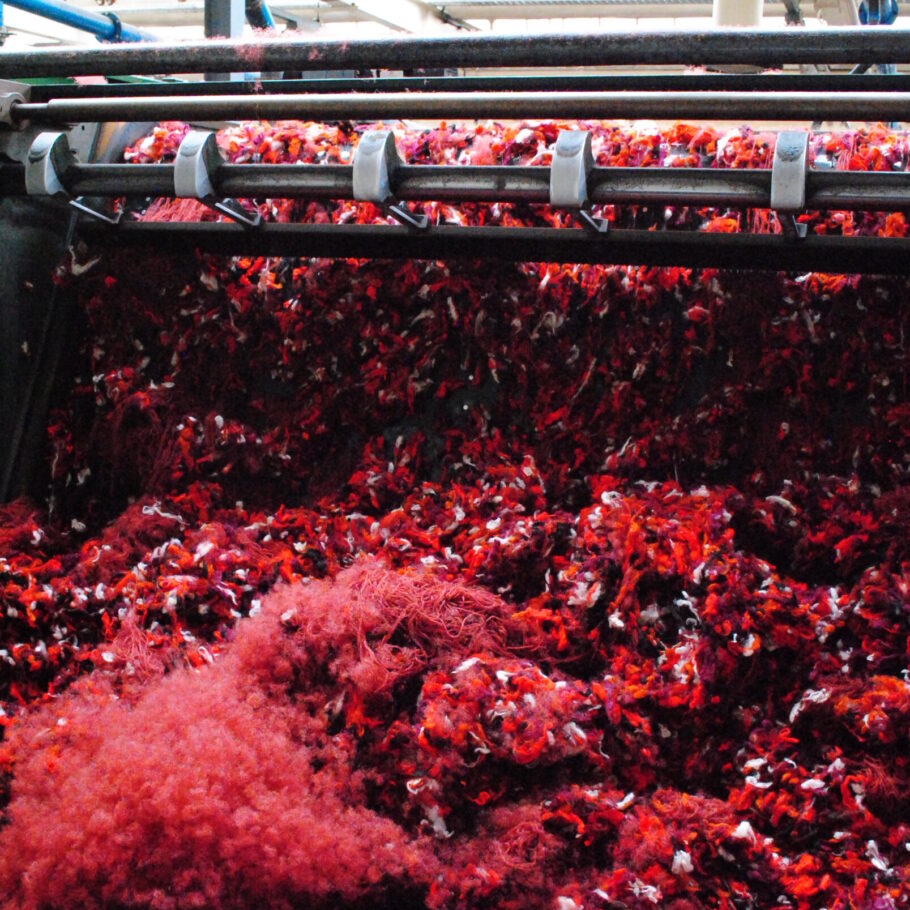
Carding
Essential in producing soft, smooth fabrics. The blended wool lubricated with a little water and oil is run through a series of combed rollers that first tease the fibres one way and then the other. This process rids the wool of any last impurities ensuring the finished fabrics are smooth and soft to the touch. Carding also helps with alignment and uniformity. At the end of the process, the combed and teased fibres are wound onto a spool ready to be placed into the spinning machine.
Spinning Yarn
The rich web of coloured wool is then spun into a huge range of amazing yarns. Our 8 frames draw out the wool and put a precise number of twists per inch into the wool, resulting in a fine but strong thread ideal for fabrics used in furnishings and clothing. The yarn is then wound onto cones going through a check to ensure continuity of thickness of the yarn. Any faults are cut out of the thread and the ends spliced together (not knotted as in days gone by) leaving a yarn that will weave into smooth fabrics. The cones, holding up to 16,000m of yarn are then ready to be sent to warping and weaving.
Warping
The cones of yarn are wound over a drum (known as a swift or mill) and a warp (lengthwise threads) is made for weaving. This can be a complicated process depending on the intricacy of the pattern in the finished fabric. Precise lengths of different coloured yarn may be required in a single vertical thread and up to 2000 threads may be required for a width of fabric. These are checked by hand and must all be held in an exact order to ensure accurate and uniform patterns and designs.
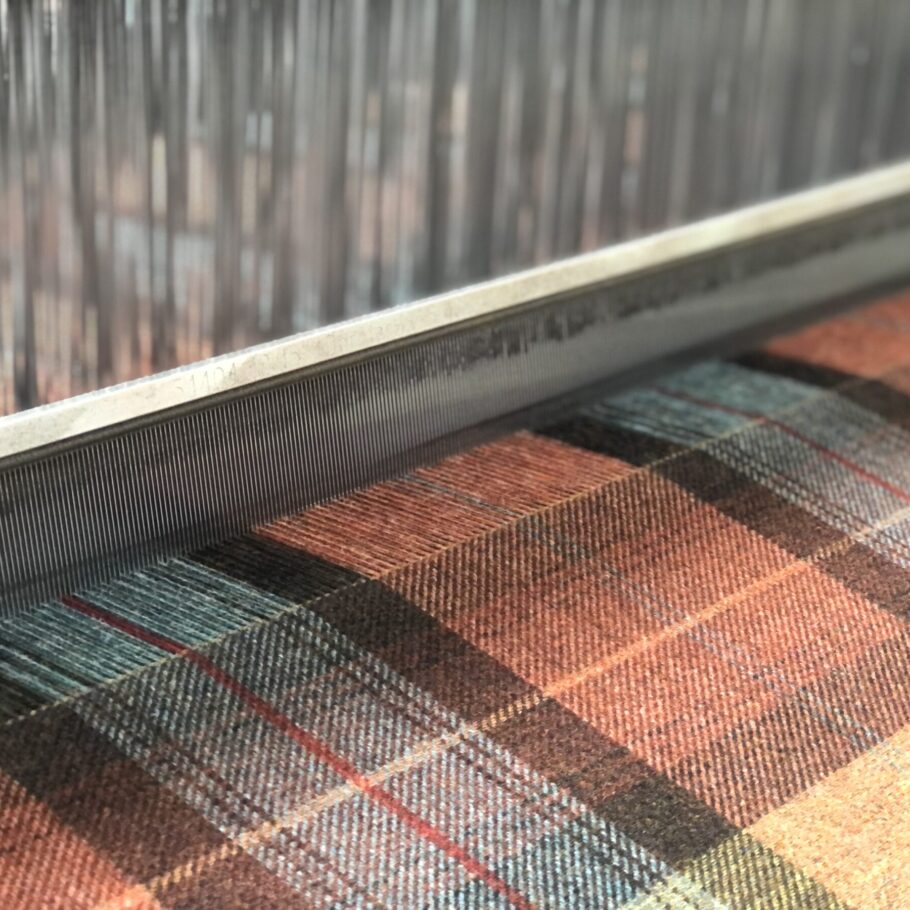
Weaving
This is where many different yarns are woven together in intricate weaves to create stunning fabrics. Our mill uses automatic Rapier looms to take the weft (horizontal thread) across the warp threads, which are capable of weaving 30,000m of cloth per week. After the fabric is woven, each piece begins our strict quality control process. Every inch of fabric is inspected at three stages in the manufacturing process – when it comes off the loom, after finishing and again before it leaves the factory – ensuring our trademark consistency in quality.
Scouring, Milling and Finishing
After weaving the fabric is scoured (washed) using pure water pumped from boreholes 200ft below Guiseley, and then milled and dried. The oils that were used to aid manufacture of the fabric are removed and fire retardants and water resist treatments can be padded onto the fabric. This is when the wonderful and luxurious feel (or ‘handle’) starts to become apparent. The final step in the process is finishing. Each length of fabric is carefully pressed using steam and specialised equipment used to remove any shrinkage, thus completing the creation of the fabric.
